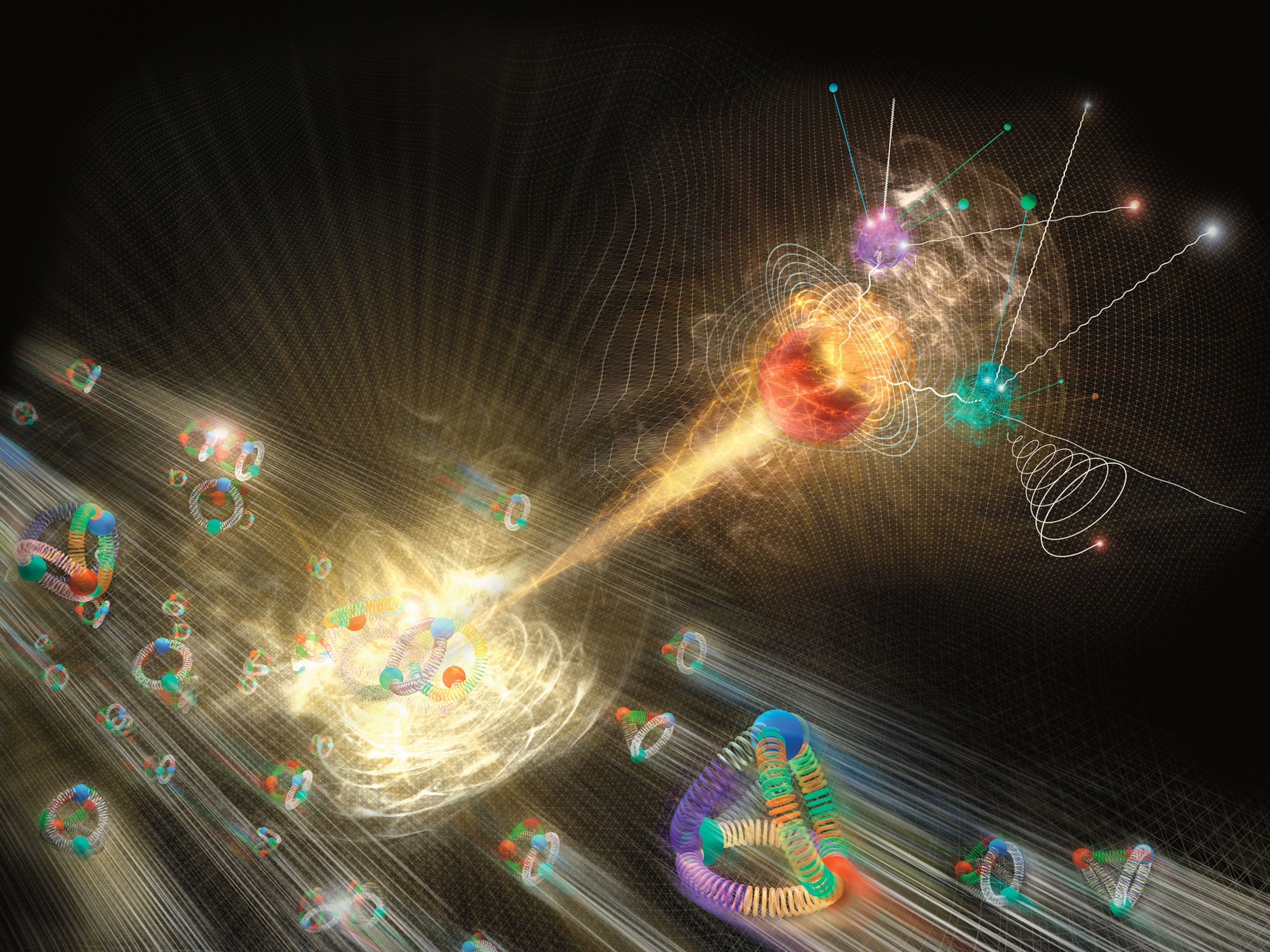
"God Particle" May Be Five Distinct Particles, New Evidence Shows
Standard physics can't explain "provocative" results, scientists say.
The "God particle" may actually be five distinct particles, evidence from a new atom-smashing experiment suggests.
Called the Higgs boson, the theoretical particle has been long sought by physicists who think it's responsible for all mass in the universe—hence the name God particle.
It's also one of the targets of experiments by the Large Hadron Collider (LHC), which began smashing subatomic particles together at half its maximum power in March.
According to the widely accepted standard model of physics, all particles acquire their mass by interacting with the Higgs boson.
But some theories say that the Higgs boson is not one, but multiple, particles with similar masses but different electrical charges.
Now, researchers at Fermilab in Batavia, Illinois, say they have found more evidence for this multiple-particle theory.
Single God-Particle Theory Challenged
In an experiment called DZero at the lab's Tevatron particle collider, scientists recently found that collisions of protons and antiprotons produced pairs of matter particles more often than pairs of antimatter particles.
The difference was tiny—less than one percent—but it can't be explained by a standard model that assumes the existence of a single Higgs boson, said study co-author Adam Martin, a theoretical physicist at Fermilab.
"It's a really small effect, but it's still much bigger than if you turn all the cranks with all the original rules in the standard model," Martin said.
"The standard model with just the one Higgs particle is too minimal to explain the DZero result."
The DZero results can, however, be explained if scientists assume the Higgs boson is actually five particles—an extension of the standard model called the two-Higgs doublet model.
"When we extend the standard model, we put in new particles and new interactions," said Martin, whose results were published recently on the physics-research website arXiv.org.
"These new interactions can even treat matter and antimatter differently and therefore lead to bigger effects in experiments."
Multiple God Particles "Quite Provocative"
If multiple Higgs bosons exist, they may interact with matter differently, which could in turn lead to new kinds of undiscovered physics beyond the standard model, scientists say.
(See also "Large Hadron Collider to Have 'Practical' Spin-Offs?")
"A lot of the schemes for extending the standard model include as a first step adding [more Higgs boson particles]," Martin said.
Chris Quigg is a theoretical physicist, also at Fermilab, but he was not involved in the study.
Though "quite provocative," the results are still preliminary, Quigg stressed.
"I know of nothing to make me explicitly doubt the result, but when something is so unexpected and yet so subtle it bears taking time and taking a deep breath," Quigg said. "It's important not to jump up and down too soon about this."
If Martin's team is correct and the Higgs boson is actually five different particles, then it should be detectable by the LHC in Switzerland. (See Large Hadron Collider pictures.)
"In our interpretation," study co-author Martin said, "these Higgses cannot be too heavy, so we should definitely see them during the LHC era."
David Evans, a physicist at the University of Birmingham and the head of the LHC’s ALICE project, added by email, "I personally think it is unlikely that we have five different Higgs particles.
"But if this was proved correct, it would make the LHC even more exciting."





